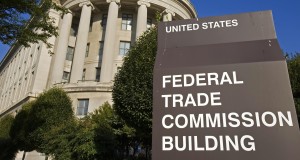A sample text widget
Etiam pulvinar consectetur dolor sed malesuada. Ut convallis
euismod dolor nec pretium. Nunc ut tristique massa.
Nam sodales mi vitae dolor ullamcorper et vulputate enim accumsan.
Morbi orci magna, tincidunt vitae molestie nec, molestie at mi. Nulla nulla lorem,
suscipit in posuere in, interdum non magna.
|
Nearly six months before this week’s reveal of iPhone 6 and the Apple Watch, the Wall Street Journal reported that Apple was in talks with Comcast Corp. about “teaming up for a streaming-television service that would use an Apple set-top box and get special treatment on Comcast’s cables to ensure it bypasses congestion on the Web.” For content, the product reportedly would not only offer users access to on-demand movies, TV programs and other apps, including games, but also live Comcast cable programming. This raises a serious question whether such an arrangement would represent a procompetitive development or instead further delay a languishing 20-year federal effort to create a commercially viable retail market for cable set-top boxes (“STBs”).
There are three sets of obstacles potentially standing in the way of this initiative. First are business issues associated with customer control. As commentary noted at the time:
Back in February it seemed both Comcast and DirecTV were reluctant to allow Apple to develop a system where customers logged in using their Apple credentials instead of their pay-TV accounts. The fundamental question of who gets to have the primary relationship with the customer has played prominently in Apple’s negotiations with magazine and newspaper publishers in the past, so it makes sense that the issue would pop up again in a different medium. Given that Comcast has been investing in its own advanced set-top boxes, the cable giant is probably not ready to cede too much ground too quickly.
The second set of issues relates to whether Apple, or any content provider, should be permitted to pay for routing of its IPTV traffic as a managed service, receiving priority handling for the packets involved, from ISPs. That is a subset of the network neutrality debate, commonly referred to as “paid prioritization,” that continues to rage before the FCC and Congress.
 Yet a third set of issues has received scant attention in the business media. That is, how would an Apple STB deal with the 1996 legal mandate that so-called “navigation devices” be available for retail purchase by consumers, in other words unbundled from cable television and broadband service? Apple is known to have the most popular, addictive and tightly integrated ecosystem of all technology companies. The company is famous for steadfastly protecting this closed ecosystem and declining to make its hardware, or most software, interoperable with other platforms. The devices and software Apple sells are designed to work well with each other and sync easily so that preferences and media can be copied or shared with multiple devices without much effort. Applications work on many devices at the same time — even with a single purchase — and user interfaces are very similar across devices. Sure, out of necessity Apple offers iTunes software for Windows (supporting both the iTunes Store for music and video purchases and iPhone syncing on Windows PCs), but at their core most Apple products work best, if at all, only with other Apple products. Yet a third set of issues has received scant attention in the business media. That is, how would an Apple STB deal with the 1996 legal mandate that so-called “navigation devices” be available for retail purchase by consumers, in other words unbundled from cable television and broadband service? Apple is known to have the most popular, addictive and tightly integrated ecosystem of all technology companies. The company is famous for steadfastly protecting this closed ecosystem and declining to make its hardware, or most software, interoperable with other platforms. The devices and software Apple sells are designed to work well with each other and sync easily so that preferences and media can be copied or shared with multiple devices without much effort. Applications work on many devices at the same time — even with a single purchase — and user interfaces are very similar across devices. Sure, out of necessity Apple offers iTunes software for Windows (supporting both the iTunes Store for music and video purchases and iPhone syncing on Windows PCs), but at their core most Apple products work best, if at all, only with other Apple products.
As a business strategy, the closed Apple ecosystem experienced some very bad years in the mid-1990s, yet today has propelled Apple into its current status as the world’s most valuable corporation. As a legal and policy matter, though, things could be quite different.
Continue reading Apple’s Cable Set-Top Box and Interoperability
Last month a Paris appeals court annulled some €3.9 million (US$5.2M) in fines imposed on endive producers and their trade associations by the French Competition Authority (the Autorité de la concurrence). Not dissuaded, that French competition agency just slapped a €1.6M (US$2.1M) fine on Caribbean yogurt maker Societe Nouvelle des Yaourts de Littee (SNYL) for falsely questioning the safety and quality of a rival brand in Martinique and Guadeloupe, characterizing the practice as “abuse of dominance” in the marketplace. 
This epitomizes a fundamental disconnect between antitrust law and competition policy in the U.S. and that of many other nations. (No, the French are not alone…) American antitrust principles and decisions generally limit the reach of competition law — aside from competitor collision like price-fixing cartels — to business conduct that uses market power in an exclusionary manner. As the Supreme Court emphasized in 1993, “[e]ven an act of pure malice by one business competitor against another does not, without more, state a claim under the federal antitrust laws; those laws do not create a federal law of unfair competition or ‘purport to afford remedies for all torts committed by or against persons engaged in interstate commerce.'” In sharp contrast, the FCA reasoned about yogurt that “the dissemination of misleading and disparaging remarks by a dominant operator against one of its competitors is a serious practice with regard to competition rules.”
“Between December 2007 and December 2009, SNYL broadcast information discrediting the sanitary quality of Laiterie de Saint-Malo products using the questionable results of bacteriological tests and questioning the irregular consumption deadlines affixed to its products,” the FCA reported in a (translated) statement. This led a number of retailers to pull Malo products from shelves for an extended period. “This behavior had the effect of limiting product sales of Laiterie de Saint-Malo in Martinique and Guadeloupe — an abuse of dominant position prohibited by Article L 420-2 of the Commercial Code,” the FCA concluded.
In the United States, legal standards for proving antitrust claims are rightly rigorous; they are strict in order to reduce the risk that enforcement of the antitrust laws may chill the very sort of vigorous, competitive conduct they are intended to encourage. It’s been true forat least 35 years that the Sherman Act “is not a panacea for all evils that may infect business life.” Legendary antitrust law scholars Phillip Areeda and Herbert Hovenkamp have advocated a nearly insurmountable presumption against deception and fraud serving as the basis for a monopolization claim, a presumption most courts have readily embraced. As one court of appeals cogently explained, “[i]solated tortious activity alone does not constitute exclusionary conduct for purposes of a [Sherman Act] § 2 violation, absent a significant and more than a temporary effect on competition, and not merely on a competitor or customer…. Business torts will be violative of § 2 only in ‘rare gross cases.’”
The difference is that between competition and consumer protection, which are quite distinct concepts in American jurisprudence. If a firm uses a monopoly to harm competition without business justification, that’s an antitrust violation. If a firm lies about a competitor’s products or runs false advertising, that’s a deceptive business practice. The two legal regimes are directed at different constituencies and conduct, which is why the Federal Trade Commission Act was amended in the 1930s to add a separate provision (Section 5) for “unfair or deceptive” business practices, and why the FTC accordingly is separated into its two principal divisions: the Bureau of Competition and the Bureau of Consumer Protection. Likewise, the Lanham Act specifically prohibits false advertising and provides a damages remedy for injured companies. Thus, false representations around a firm’s own, or it’s competitor’s, products can be legally actionable, as the Supreme Court again ruled this year in a case about beverage labeling (Pom Wonderful v. Coca-Cola). They’re just not an antitrust violation in the United States.
Continue reading There Go the French Again On Competition
The French have a wonderful saying, la plus ça change, plus c’est la même chose, which roughly translates to “the more things change, the more they remain the same.” That’s an apt description of current, high-profile wrangling in the United States about music licensing under federal copyright law. Despite all the jarring changes to the recording industry over the past decade — remember Tower Records? — it’s the same issues and (mostly) the same players as always, arguing over a Rube Goldberg-like system of arcane complexity.
Today the House of Representatives (specifically the Judiciary Committee’s Subcommittee on Courts, Intellectual Property and the Internet) will hold a second round of hearings on music licensing. This inquiry coincides with a recent announcement by the Justice Department that it will review — and solicit public feedback on — the 73-year-old antitrust decrees that govern ASCAP and BMI, two groups which act as licensing clearinghouses for a range of outlets that use music, including radio stations, websites and even restaurants and doctors’ offices. As the New York Times has observed, “billions of dollars in royalties are at stake, and the lobbying fight that is very likely to unfold would pit Silicon Valley giants like Pandora and Google against music companies and songwriter groups.”

According to the consent decrees, which were instituted in 1941 after federal antitrust investigations, ASCAP and BMI cannot refuse licenses to music outlets that request them. These two “performance rights organizations” (PROs) have operated under this structure for decades, but in recent years have lost important legal cases having to do with licensing. Earlier in 2014, for instance, ASCAP lost a rate-setting case against Pandora in which several prominent music publishing executives were criticized harshly by the presiding federal judge. In response, major publishers like Sony and Universal Music Group have begun to openly discuss withdrawing from ASCAP and BMI, a move that would further complicate the licensing process.
Continue reading Music Licensing—La Plus Ça Change?
There’s a famous old political adage — “where you stand is where sit” (also known as Miles’ Law) — meaning basically that government policy positions are dictated more by agency imperative and institutional memory than objective consideration of the public interest. A related concept is “regulatory capture,” where administrative agencies over time become defenders of the status quo and pursue objectives more for regulated firms as their constituency than consumers. Capture theory is closely related to the “rent-seeking” and “political failure” theories developed by the public choice school of economics. Or as Harold Demsetz put it well in his influential 1968 article, Why Regulate Utilities?, “in utility industries, regulation has often been sought because of the inconvenience of competition.”
That’s no longer limited to electricity companies and other public utilities these days. With the advent of rapid, low-cost entry into previously sheltered markets, powered by technology and the sharing economy, today’s incumbent industries are taking regulatory capture and politics as rent seeking to new heights. At DisCo we’ve written extensively about Uber, Lyft, Airbnb, Tesla and many other disruptive new start-ups that are facing a backlash from established industries (taxis, hotels and auto dealers, respectively) which use consumer protection as a Trojan Horse to disguise preventing or delaying competition on price, features and service. Politicians in locales as diverse as New York, New Jersey, San Antonio and Seattle (believe it or not!) have, wittingly it seems, gone along so far.

This is where what antitrust lawyers dub competition advocacy comes into play. Most antitrust policy in the U.S. is made in federal court as a result of merger, monopolization and horizontal collusion prosecutions launched by the Department of Justice (DOJ) and the Federal Trade Commission (FTC). But due to our federal-state system and a judge-made doctrine allowing states to exempt some markets from competition despite federal antitrust demands (government action, and private conduct to obtain such action, is challengeable in only relative narrow circumstances), much of the battle takes place in the legislative and regulatory arenas. Accordingly, competition advocacy is the primary tool available to antitrust enforcers in the U.S. to oppose state and local regulations favoring established firms over start-ups and parochially sheltering in-state companies from out-of-state competitors. The result is that for three decades the federal antitrust agencies have engaged in affirmative outreach to state and local legislators and regulators in the form of comments, letters and occasional lawsuits that seek to drive home the basic truths that competition outperforms regulation and the law should not pick winners and losers when it comes to evolving markets. (State attorneys general also undertake competition advocacy, principally through amicus briefs, as well.)
Continue reading Competition Advocacy Matters—Here’s Why and How
Three high-level staffers at the Federal Trade Commission (Andy Gavil, Debbie Feinstein and Marty Gaynorare) are backing Tesla Motors Inc. in its ongoing fight to sell electric cars directly to consumers. As we’ve observed, Tesla forgoes traditional auto dealers in favor of its own retail showrooms. But that business model was recently banned by the New Jersey Motor Vehicle Commission — and is under fire in many other states as well — as a measure supposedly to protect consumers.
 The ubiquitous state laws in question were originally put into place to prevent big automakers from establishing distribution monopolies that crowd out dealerships, which tend to be locally owned and family run. They were intended to promote market competition, in other words. But the FTC officials say they worry (as have we at DisCo) that the laws have instead become protectionist, walling off new innovation. “FTC staff have commented on similar efforts to bar new rivals and new business models in industries as varied as wine sales, taxis, and health care,” the officials write in their post. “How manufacturers choose to supply their products and services to consumers is just as much a function of competition as what they sell — and competition ultimately provides the best protections for consumers and the best chances for new businesses to develop and succeed. Our point has not been that new methods of sale are necessarily superior to the traditional methods — just that the determination should be made through the competitive process.” The ubiquitous state laws in question were originally put into place to prevent big automakers from establishing distribution monopolies that crowd out dealerships, which tend to be locally owned and family run. They were intended to promote market competition, in other words. But the FTC officials say they worry (as have we at DisCo) that the laws have instead become protectionist, walling off new innovation. “FTC staff have commented on similar efforts to bar new rivals and new business models in industries as varied as wine sales, taxis, and health care,” the officials write in their post. “How manufacturers choose to supply their products and services to consumers is just as much a function of competition as what they sell — and competition ultimately provides the best protections for consumers and the best chances for new businesses to develop and succeed. Our point has not been that new methods of sale are necessarily superior to the traditional methods — just that the determination should be made through the competitive process.”
As Tesla’s CEO Elon Musk noted earlier this year, “the auto dealer franchise laws were originally put in place for a just cause and are now being twisted to an unjust purpose.” Yes, indeed. It is pure rent seeking by obsolescent firms. State and local regulators have eliminated the direct purchasing option by taking steps to shelter existing middlemen from new competition. That’s not at all consumer protection, it is instead economic protectionism for a politically powerful constituency. Thanks to the FTC staff, some brave state legislators may now be emboldened to resist the temptation to decide how consumers should be permitted to buy cars.
Unfortunately, the issue is not limited to automobiles. I wrote recently about how in New York City, officials want to ban Airbnb because its apartment rental sharing service is not in compliance with hotel safety (and taxation) rules. The New York Times last Wednesday editorialized in support of that approach, arguing that Airbnb is reducing the supply of apartments and increasing rents. They’re wrong, of course, because short-term visits obviously do not substitute for years-long apartment leases. But the more important issue is that one economic problem does not justify reducing competition in a separate market. If New York actually has an apartment rent price problem, banning competition for hotels is no more a solution than prohibiting direct-to-consumer auto sales.
Originally prepared for and reposted with permission of the Disruptive Competition Project.

Tuesday was a big day in the world of tech-powered disruptive innovation. What the news of April 22nd shows, however, is expanding use of the legal process by incumbent industries to thwart change — and the unfortunately all too frequent concurrence of regulators and courts with that ancient mantra of obsolescent businesses, namely “consumer protection.” Old, entrenched industries frequently lean on their political connections and get the government to come up with some new justification (or recycle an old one) for shutting down upstart rivals or, at the very least, undermining their competitive advantages.
Tuesday witnessed two potentially landmark events, ones that may in time change this familiar paradigm. The first was the morning hearing before the U.S. Supreme Court in ABC v. Aereo, the broadcast networks’ copyright law challenge to the now well-known streaming IPTV start-up. The second, just slightly later in the day, were oral arguments at a New York state court in Albany over whether Airbnb will be permitted to offer its peer-to-peer apartment rental services in New York City, where a 2010 measure meant to curb unregulated hotels prohibits renting out an apartment for less than a month.

The DisCo Project has devoted a series of posts to the Aereo case. Like a Sony Betamax for the 21st century, the Supreme Court is being asked to decide whether moving technology that is lawful for an individual to use on his or her own becomes a copyright violation if offered over the Internet. But the major broadcast networks (like the movie studios who opposed VCR recording in the 1980s) are convinced their entire business model will collapse if Aereo is sanctioned, threatening the nuclear option of stopping over-the-air transmission in favor of all-cable distribution should Aereo prevail.
Airbnb, in contrast, is fighting an effort by New York regulators to collect the names of Airbnb hosts who are breaking the law by renting out multiple properties for short periods. The company, which is now estimated to be worth $10 billion, is framing the dispute as a case of government scooping up more data than it needs for purposes that are vague. What the tussle is really about, of course, is whether the renting public actually needs protection from “unregulated hotels” and, even if true, why Airbnb’s efforts to make a market for DIY rentals is at all harmful. Continue reading Tech Tuesday: Litigation, Legislation and Regulatory Protectionism
When is a prediction not worth relying upon? For purposes of analyzing mergers under the Clayton Antitrust Act, a recent decision in favor of the Justice Department indicates that predictions are worth less — perhaps are even worthless — when they are contradicted by the actual facts of the marketplace. The government’s successful legal challenge a couple of weeks ago to the merger of two Internet start-ups ironically shows that the force of predictive judgments remains powerful, even when courts could employ reality as a basis for accurate comparison.
Some background. A 2013 DisCo post authored by the undersigned contrasted “future markets,” where the contours of products and entry do not yet exist and cannot reliably be predicted, with “nascent markets,” in which those features indeed exist but only in their infancy. My thesis was that antitrust enforcement in the latter is preferable because looking back at nascent markets once they have a chance to develop gives the government a more accurate basis on which to assess the actual impact of mergers and concentration than rank projections in which policymakers have no comparative expertise.
The case used to illustrate this theme was United States v. Bazaarvoice, Inc., in which the Justice Department sued to unwind a 2012 merger, already completed, between two firms in what it called the online ratings and reviews platform market. I concluded that
by challenging the merger post-consummation, DOJ has avoided basing its enforcement decisions on predictions of future markets and instead the case should rise or fall on the accuracy of its ex post analysis of actual competitive effects.
That’s not at all what happened, though.
Continue reading Is Bazaarvoice Bizarre?
I’ve spent a fair amount of time at Project DisCo discussing how political, legal and regulatory processes in the United States are largely biased against disruptive innovators in favor of legacy incumbents. That’s typically just as true for Uber and its ride-hailing competitors as it is for Aereo, Hulu, Netflix and other streaming video — or over the top (“OTT”) — Internet television services. But perhaps no longer.
The Consumer Choice in Online Video Act (S.1680), introduced by Sen. Jay Rockefeller, chairman of the Senate Commerce Committee, aims to change things. The legislation’s stated objectives are to “give online video companies baseline protections so they can more effectively compete in order to bring lower prices and more choice to consumers eager for new video options” and to “prevent the anticompetitive practices that hamper the growth of online video distributors.” It does so by (a) requiring television content owners to negotiate Internet carriage arrangements with OTT providers in good faith, (b) guaranteeing such firms reasonable access to video programming by limiting the use of contractual provisions that harm the growth of online video competition, and (c) empowering the FCC to craft regulations governing the program access interface between online providers and traditional television networks and studios.

S.1680 is a remarkable legislative effort to predict where the nascent online programming market is headed. It anticipates that in order to fulfill their competitive potential, OTT video entrants will require similar legal protections to what satellite television providers have for years enjoyed. The bill applies the program access model developed several decades ago for satellite television to the new world of OTT video.
As Rockefeller explained:
[He] has watched as the Internet has revolutionized many aspects of American life, from the economy, to health care, to education. It has proven to be a disruptive and transformative technology, and it has forever changed the way Americans live their lives. Consumers now use the Internet, for example, to purchase airline tickets, to reserve rental cars and hotel rooms, to do their holiday shopping. The Internet gives consumers the ability to identify prices and choices and offers an endless supply of competitive offerings that strive to meet individual consumer’s needs.
But that type of choice — with full transparency and real competition — has not been fully realized in today’s video marketplace. Rockefeller’s bill addresses this problem by promoting that transparency and choice. It addresses the core policy question of how to nurture new technologies and services, and make sure incumbents cannot simply perpetuate the status quo of ever-increasing bills and limited choice through exercise of their market power.
Modeled explicitly on the controversial 1992 Cable Act (which itself passed only over a presidential veto), S.1680 appears to be the first piece of legislation embracing disruption as a procompetiitive form of market evolution, including as its initial congressional “finding” that OTT services have the potential to “disrupt the traditional multichannel video distribution marketplace.” That’s excellent. At the same time, the bill’s choice of solution is contentious, by subjecting vertically integrated cable and television providers (e.g., Comcast-NBCu) to another regime of program access and retransmission mandates. The legal standard fashioned for testing the validity of a television distribution contract in S.1680 is whether it “substantially deters the development of an online video distribution alternative.” Given the highly visible retransmission disputes that have arisen in recent months, such as the Tennis Channel and CBS, plus the lack of evidence that vertical integration in fact provides an incentive for exclusive dealing and content foreclosure, free market advocates are likely to object to this. Proponents of net neutrality rules, especially where data caps are concerned, have already spoken out in support.
Continue reading OTT Disruption: Is the “Rockefeller Bill” the Answer?
The U.S. economy has seen its share of disruptive technologies derailed (at least in time-to-market) by archaic legal regimes. Look to Uber’s taxi-hailing service and Airbnb’s apartment rental innovations as recent examples. Most times it’s a case of old assumptions about consumer protection and competition having lost validity with changed circumstances. Other times it’s simple protectionism by legacy incumbents, as in the legal assault on Aereo’s IPTV streaming service for alleged copyright infringement. In the case of electric auto developer Telsa Motors, however, it’s something a little different.
 The problem for Tesla’s well-reviewed vehicles — Consumer Reports gave the new Tesla S its highest car rating ever — is not technical, as the California start-up boasts impressive lithium battery innovations and is aggressively building its own chain of recharging stations. Instead the constraint is a plethora of state laws (48 in all) that prohibit or limit automobile manufacturers from selling direct to consumers or owning auto dealerships. These statutes, which date to the 1950s, are matched by a federal law known as the “Automobile Dealers’ Day In Court Act.” That legislation is an anomaly which allows dealers (franchisees) to sue in their home federal district court and recover legal fees if a manufacturer fails to “act in good faith in performing or complying with any of the terms or provisions of the franchise, or in terminating, canceling or not renewing the franchise with said dealer.” (These sorts of lawsuits would otherwise require a minimum of $75,000 at stake, would be governed by state law and would not have the threat of fee-shifting.) The problem for Tesla’s well-reviewed vehicles — Consumer Reports gave the new Tesla S its highest car rating ever — is not technical, as the California start-up boasts impressive lithium battery innovations and is aggressively building its own chain of recharging stations. Instead the constraint is a plethora of state laws (48 in all) that prohibit or limit automobile manufacturers from selling direct to consumers or owning auto dealerships. These statutes, which date to the 1950s, are matched by a federal law known as the “Automobile Dealers’ Day In Court Act.” That legislation is an anomaly which allows dealers (franchisees) to sue in their home federal district court and recover legal fees if a manufacturer fails to “act in good faith in performing or complying with any of the terms or provisions of the franchise, or in terminating, canceling or not renewing the franchise with said dealer.” (These sorts of lawsuits would otherwise require a minimum of $75,000 at stake, would be governed by state law and would not have the threat of fee-shifting.)
Continue reading Want A Tesla? You Can’t Buy One Here.
In the ongoing saga of governmental antitrust investigations of Google, recent weeks have witnessed a new level of rhetoric and disingenuous use of the regulatory process to handicap, rather than promote, competition and innovation. The current case in point relates once again to search neutrality, but this time complaining rivals remarkably object to getting exactly what they’ve asked for over many years.
Just a little less than four months after the U.S. Federal Trade Commission (FTC) closed its monopolization investigation into alleged “search bias” by Google, the European Commission (EC) — the pan-European competition authority for the 30-nation European Economic Area (EEA) — released a set of proposed commitments by Google designed to resolve the competition “concerns” preliminarily outlined by EC competition chief Joaquin Almunia. That set off a firestorm of criticism from so-called “vertical” competitors (e.g., travel booking or consumer shopping sites), led by UK firm Foundem, a plaintiff against Google in its own antitrust lawsuit in England.
 The first and most basic competition concern asserted by the EC was that Google gives preference to its own services, like travel search, by placing those “specialised” (in European spelling) search results above “organic” or “natural” search results. Google proposes to label these specialized results as paid placements and to add equally prominent links to vertical rivals alongside. Under the commitments Google would auction links for commercial services to qualifying rivals using a lengthy set of rules for transparent and equal treatment. It is precisely the paid link insertion remedy that Google critic and long-time legal adversary Gary Reback called for at an April 2013 FairSearch.org event in Washington, DC. The first and most basic competition concern asserted by the EC was that Google gives preference to its own services, like travel search, by placing those “specialised” (in European spelling) search results above “organic” or “natural” search results. Google proposes to label these specialized results as paid placements and to add equally prominent links to vertical rivals alongside. Under the commitments Google would auction links for commercial services to qualifying rivals using a lengthy set of rules for transparent and equal treatment. It is precisely the paid link insertion remedy that Google critic and long-time legal adversary Gary Reback called for at an April 2013 FairSearch.org event in Washington, DC.
Foundem opposes that solution. But making heads or tails of Foundem’s rather incoherent response to Google’s EC settlement proposal is difficult. In part that’s because the response is a hodge-podge of discredited claims, incorrect assumptions and fuzzy reasoning. In part it’s because Foundem’s use of over-the-top language and Chicken Little predictions makes it impossible to decipher facts and reality from mere opinions and sour grapes. For instance:
If the Commission were to adopt Google’s proposals in anything like their present form, it would be unwittingly playing into Google’s hands — aiding and abetting Google in its long running strategy to transition commercial searches away from its natural search results and into its paid advertisements. Under these proposals, Google would not only continue to profit from the traffic it hijacks from rivals, but it would now also profit from the traffic it sends to rivals…. Any vertical search companies that survive the transition to such a radically altered and unfavourable marketplace would be left eking out a living on the slimmest of margins from the scraps left over from the traffic, and now revenues, that Google would be diverting to its own services.
If one separates the adjectives from Foundem’s substantive criticisms, there are four principal contentions it makes.
1. “Universal Search” labeling does not fix organic search manipulation. Foundem says the EC proposal addresses only the “preference” of Google’s own links in a prominent area of its redesigned Universal Search results pages, not the use of search algorithms allegedly to demote links to vertical rivals. “Instead, with a flourish of misdirection, they focus exclusively on its [sic] Universal Search inserts.” Because the commitments “ignore Google’s natural search results, they are misdirected in their application and fall far short of their target.”
2. Paid Rival Links would benefit Google financially. Foundem complains that Google’s proposal to insert paid links to vertical rivals for commercial searches will allow it to “monetise” (again in European spelling) rivals’ Web traffic. The proposal, Foundem claims, would allow Google to become “the main beneficiary of its rivals’ vertical search services as well as its own,” which would “extend Google’s existing monopoly powers and could eventually leave it in sole possession of the efficient, low-overhead, business model that has characterised and fuelled the internet revolution.”
3. Google should be prohibited from applying site quality algorithms. Foundem asserts that the use of website quality metrics designed to weed out malware, spam and search-manipulated sites that lack content is inherently anticompetitive, but that Google’s corresponding commitment to include all vertical rivals absent “some clearly defined Harmful Practices (such as illegal content and consumer deception)” or with “prior individual approval from the [European] Commission” is inadequate.
4. The Google commitments do not extend to non-search services. Foundem complains that ”vertical search was simply the natural first target for Google. Google can (and will, if it isn’t stopped) extend the same abusive practices into other sectors, including e-commerce, auctions, and social networks.” It opposes the proposed commitments because they do not cover these other Internet-based services.
Each of these criticisms is misplaced, but none more so than the claim that the Google proposal should be rejected because it somehow misses the big problem in search. The EC’s principal competition concern was that Google gave undue preference to its own vertical services with the invention of Universal Search. Therefore, inserting links to rivals in that same “preferential,” prominently outlined space above organic search results provides obvious parity between Google’s shopping service, for instance, and Foundem’s consumer electronics listings. The second concern was that Universal Search deceives users into thinking results are something other than promotion of Google’s own commercial services because the lack of a clear distinction between a promoted link and normal search results “left some consumers less able to make an informed choice.” Hence, as I’ve addressed in detail before, a label remedy is precisely the right solution to what is, at heart, a contention of misleading trade practices.
The FTC notably concluded that Google’s switch to Universal Search was a bona fide search innovation that benefited consumers. Mr. Almunia has made essentially the same concession. To the extent Foundem believes the practice is inherently anticompetitive and should be banned, as it appears, its critique is inapposite to an evaluation of the effectiveness of Google’s proposed EC commitments. Even in Europe, competition authorities do not outlaw products developed by firms with market power, and EC competition law, like that in the US, is strongly disinclined to sanction an antitrust case based on allegations of “anticompetitive product design.”
The reason for this restraint is simple: competition officials and courts are not engineers or businessmen and thus have no objective basis on which to assess whether product designs are “good” or not. That is a decision left to the marketplace, with consumers literally voting with their clicks and wallets. Indeed, such reserve is essential in technology markets, where product innovation occurs at the speed of light in and in which user interface and consumer experience are so subtle and competitively important. It is the reason former FTC chairman Jon Leibowitz — on behalf of a unanimous, politically diverse five-commissioner agency — rejected calls that antitrust should be used to “regulate the intricacies of Google’s search algorithms.” Ditto Mr. Almunia, who likewise told the Financial Times back in January that his concern is “the way they present their own services” and that he was “not discussing the algorithm” used for Internet search.
Foundem’s other critiques are nonsensical. Including Paid Rival Links alongside Google’s own universal shopping and commercial links (themselves paid) requires someone to set a fair price. That is something bureaucrats and antitrust agencies again do not do well, if at all, but an auction does perfectly. There is plainly no room to include links for every commercial search site on every Google search results page, so an auction system allocates that scarce space to businesses based on their own financial calculus of the benefit of preferential placement. That’s not monetizing rivals’ traffic and does not require Foundem or any other Google competitor to participate. If these Paid Rival Links are as worthless as Foundem implies, then its prediction of Google using them as a way to usurp competitors’ revenues is especially silly, because the auction prices will be negligible. Indeed, to suggest that paid placement is for some reason invalid as a competitive search service represents the height of hubris for Foundem, whose business model is to sell all search results. If paid placement is OK for Foundem it is equally permissible for any other search firm, small or big or anywhere in between.
It’s hard to take seriously a company which contends that site quality algorithms are invalid, when we all know the entire SEO, pornography and content piracy industries try their damnedest to game search results and avoid content filters established by responsible search engines like Google. Foundem never explains why the objective criteria Google has committed to apply do not resolve its allegation that rival links were targeted for demotion unfairly. While I personally disagree with the need or justification for any such remedy, the fact is that Google’s proposed settlement directly addresses organic link results by precluding exactly the type of targeted “link demotion” that FairSearch.org, Mr. Reback and Foundem itself have long alleged Google engages in as a matter of ordinary course.
Lastly, consider for a brief moment Foundem’s odd criticism that Google has not offered proposals for “other sectors” like auctions and social networks. Foundem itself does not operate in those markets, which are obviously not Internet search. With the rather spectacular failure to date of Google+ to challenge Facebook and Twitter, or any Google service to take on eBay, no one has even claimed Google has any chance of monopolizing these very different markets. When and if there are problems of Google accumulating market power in new services against entrenched Web firms — an eventuality that is all but inconceivable today — antitrust authorities can intervene. To do so in a case about allegations of Web search dominance and abuse is unseemly by any standard, European or American.
Note: Originally prepared for and reposted with permission of the Disruptive Competition Project.

|
|
 Yet a third set of issues has received scant attention in the business media. That is, how would an Apple STB deal with the 1996 legal mandate that so-called “navigation devices” be available for retail purchase by consumers, in other words unbundled from cable television and broadband service? Apple is known to have the most popular, addictive and tightly integrated ecosystem of all technology companies. The company is famous for steadfastly protecting this closed ecosystem and declining to make its hardware, or most software, interoperable with other platforms. The devices and software Apple sells are designed to work well with each other and sync easily so that preferences and media can be copied or shared with multiple devices without much effort. Applications work on many devices at the same time — even with a single purchase — and user interfaces are very similar across devices. Sure, out of necessity Apple offers iTunes software for Windows (supporting both the iTunes Store for music and video purchases and iPhone syncing on Windows PCs), but at their core most Apple products work best, if at all, only with other Apple products.
Yet a third set of issues has received scant attention in the business media. That is, how would an Apple STB deal with the 1996 legal mandate that so-called “navigation devices” be available for retail purchase by consumers, in other words unbundled from cable television and broadband service? Apple is known to have the most popular, addictive and tightly integrated ecosystem of all technology companies. The company is famous for steadfastly protecting this closed ecosystem and declining to make its hardware, or most software, interoperable with other platforms. The devices and software Apple sells are designed to work well with each other and sync easily so that preferences and media can be copied or shared with multiple devices without much effort. Applications work on many devices at the same time — even with a single purchase — and user interfaces are very similar across devices. Sure, out of necessity Apple offers iTunes software for Windows (supporting both the iTunes Store for music and video purchases and iPhone syncing on Windows PCs), but at their core most Apple products work best, if at all, only with other Apple products.








